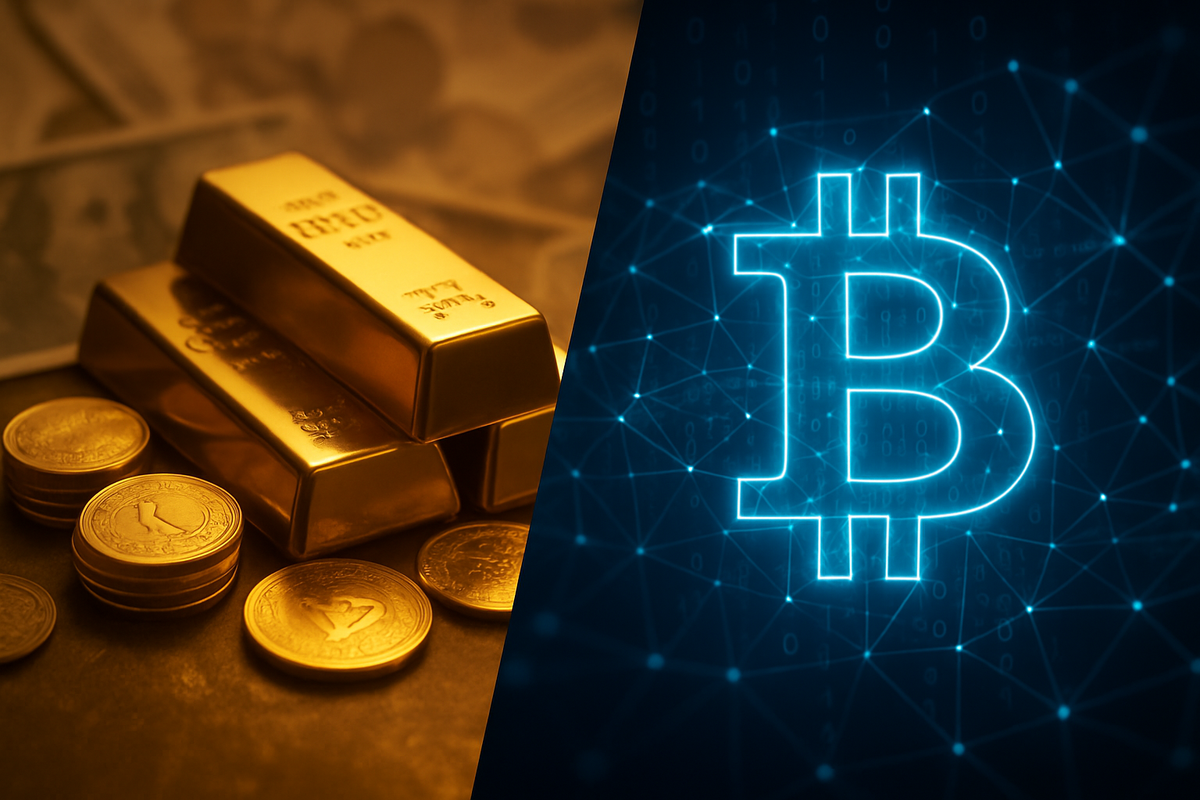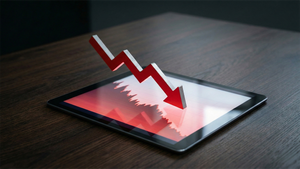
As global financial markets navigate persistent inflation, geopolitical instability, and the ever-present shadow of central bank interventions, the age-old debate surrounding the nature of money has intensified. Investors and citizens alike are increasingly scrutinizing traditional fiat currencies, seeking refuge and financial autonomy in alternatives like gold and the burgeoning digital asset, Bitcoin. This critical juncture, as of October 16, 2025, highlights a profound societal yearning for financial instruments that transcend governmental control and offer genuine protection against currency debasement and potential economic oppression inherent in centrally managed commodity economies.
The discussion is not merely academic; it touches upon the very fabric of financial freedom. The ability of central banks to expand the money supply at will, engage in quantitative easing, or implement negative interest rates can erode the purchasing power of savings, effectively transferring wealth without direct consent. In this context, both gold, with its millennia-long history as a store of value, and Bitcoin, with its revolutionary decentralized architecture, present compelling cases as bulwarks against such systemic vulnerabilities, offering distinct pathways to preserve wealth and empower individuals in an increasingly complex financial landscape.
The Enduring Luster of Gold: A Timeless Hedge
For countless centuries, gold has stood as the quintessential store of value, a tangible asset whose worth is universally recognized and independent of any government's decree. Its historical performance as a hedge against inflation is well-documented; during periods of significant currency devaluation, such as the high inflation of the 1970s or the economic uncertainty following the 2008 financial crisis, gold prices have consistently surged, preserving wealth when fiat currencies faltered. This resilience stems from its finite supply and inherent physical properties, making it a true commodity with intrinsic value.
Gold's characteristics as a commodity—its malleability, resistance to corrosion, and scarcity—underpin its diverse applications, from jewelry to electronics, but its primary allure remains its role as a monetary asset. Crucially, gold operates outside the direct influence of central banks and government monetary policies. While central banks do hold gold reserves, the metal itself cannot be printed or debased by political will. This independence has become increasingly attractive, with central banks globally aggressively accumulating gold in recent years, a strategic move to diversify holdings beyond fiat currencies and mitigate geopolitical risks, as evidenced by events like the freezing of Russia's foreign exchange reserves in 2022.
Bitcoin's Digital Revolution: The Rise of 'Digital Gold'
Emerging from the shadows of the 2008 financial crisis, Bitcoin (BTC) launched in 2009 as a peer-to-peer electronic cash system. Today, it has transcended its initial purpose to become a globally recognized asset class, frequently lauded as "digital gold." This transformation is rooted in Bitcoin's foundational attributes that strikingly mirror physical gold, positioning it as a modern hedge against economic uncertainty and currency devaluation. Even prominent figures like BlackRock (NYSE: BLK) CEO Larry Fink, who once viewed Bitcoin with skepticism, now acknowledge its legitimacy as a "digital gold" and a viable alternative asset.
Bitcoin's defining characteristic is its decentralized nature. Operating on a distributed ledger technology known as blockchain, it functions without a central authority, bank, or government. This architecture ensures transparency, security, and resistance to censorship and interference, appealing directly to those seeking an escape from government-controlled monetary systems. Furthermore, Bitcoin boasts a strictly limited supply, capped at 21 million coins, a programmatic scarcity designed to prevent inflation—a stark contrast to the unlimited printing capabilities of fiat currencies. The issuance rate is further controlled by "halving events" occurring approximately every four years, reinforcing its scarcity and making it a compelling alternative for those concerned about fiat currency debasement, a sentiment echoed by figures like Elon Musk.
Market Movers: Winners and Losers in the Alternative Currency Race
The growing prominence of gold and Bitcoin as alternatives to fiat currency creates distinct winners and losers across the financial spectrum. On the winning side are individuals and institutions prioritizing financial sovereignty and seeking protection from inflationary pressures. Investors who have strategically diversified their portfolios to include significant allocations to physical gold or Bitcoin have seen their wealth preserved, and in many cases, grow, especially during periods of economic instability. Publicly traded gold mining companies like Barrick Gold (NYSE: GOLD) and Newmont Corporation (NYSE: NEM) benefit from increased gold prices and demand, while Bitcoin mining operations such as Marathon Digital Holdings (NASDAQ: MARA) and Riot Platforms (NASDAQ: RIOT) thrive on network activity and the value of newly minted coins.
Conversely, the potential losers in this evolving financial landscape are governments and central banks that cling rigidly to unchecked monetary policies and traditional financial institutions slow to adapt. Governments that rely heavily on the ability to manipulate their fiat currencies to manage economic cycles may find their power diminished as citizens increasingly opt for independent alternatives. Furthermore, traditional banking systems, built on centralized control and intermediaries, face disruption as decentralized finance (DeFi) platforms, often powered by cryptocurrencies, offer alternative financial services. Individuals who remain solely reliant on unstable fiat currencies without exploring these alternatives risk seeing their purchasing power eroded by inflation and governmental monetary policies.
Wider Significance: Reshaping the Global Financial Order
The ascendancy of gold and Bitcoin as viable alternatives signifies more than just a shift in investment preference; it reflects a broader societal distrust in traditional financial institutions and governmental monetary policies. This trend aligns with the accelerating digitalization of money and a global search for robust inflation hedges. The debate between these two assets—one ancient, one cutting-edge—highlights a fundamental re-evaluation of what constitutes sound money in the 21st century.
Potential ripple effects are substantial. Traditional banking models may face increasing pressure to innovate and integrate digital assets, or risk losing market share to agile fintech companies. Regulatory bodies worldwide are grappling with the challenge of how to classify, tax, and oversee cryptocurrencies without stifling innovation or compromising financial stability. The emergence of Central Bank Digital Currencies (CBDCs) can be seen as a direct response to the rise of decentralized digital assets, as governments attempt to maintain control over the digital money landscape. Historically, shifts in dominant monetary forms have often accompanied significant geopolitical and economic realignments, and the current dynamic between fiat, gold, and Bitcoin could be signaling a similar, profound transformation towards a more multi-polar and diversified global monetary system.
The Road Ahead: Navigating a Multi-Polar Monetary Future
Looking ahead, the financial landscape will likely see a continued interplay between fiat currencies, gold, and Bitcoin. In the short term, market volatility for Bitcoin is expected to persist, influenced by regulatory developments, technological advancements, and macroeconomic shifts. Gold, meanwhile, is likely to maintain its role as a stable store of value, particularly amidst ongoing geopolitical tensions and inflation concerns. Increased institutional adoption of Bitcoin, evidenced by the proliferation of Bitcoin ETFs and corporate treasury allocations, suggests its integration into mainstream finance will continue.
Longer term, we may be heading towards a multi-polar monetary system where various forms of money coexist. Central banks may accelerate their research and deployment of CBDCs, attempting to offer the benefits of digital currency under central control. Simultaneously, the appeal of decentralized assets like Bitcoin, offering true financial autonomy, will likely grow, especially in regions experiencing hyperinflation or political instability. Strategic pivots for financial institutions will involve embracing digital assets, developing robust custody solutions, and offering hybrid investment products. Market opportunities will emerge in infrastructure development for the crypto space, innovative financial services built on blockchain, and continued investment in precious metals. The challenges will include achieving regulatory clarity, addressing scalability and environmental concerns for cryptocurrencies, and ensuring equitable access to these alternative financial tools globally.
A New Era of Financial Resilience
In summary, the ongoing comparison between gold and Bitcoin as alternatives to fiat currency underscores a pivotal moment in financial history. Gold, with its unparalleled legacy as a tangible, independent store of value, continues to offer a fundamental hedge against economic uncertainty and governmental overreach. Bitcoin, a revolutionary digital asset, provides a new paradigm of decentralized, inflation-resistant wealth preservation, challenging the very foundations of traditional finance. Both represent powerful tools for individuals seeking to assert financial sovereignty and build resilience against the potential for oppression in centrally controlled commodity economies.
Moving forward, investors should closely monitor regulatory frameworks surrounding cryptocurrencies, the adoption rates of both gold and Bitcoin by institutional players, and the broader geopolitical and macroeconomic environment. The evolving relationship between these alternatives and traditional fiat currencies will define the future of money. Ultimately, the choice between gold and Bitcoin, or a strategic combination of both, will depend on individual risk tolerance, investment objectives, and a fundamental belief in the future of decentralized versus centralized financial control. The market is moving towards greater diversification and autonomy, and understanding these dynamics will be crucial for navigating the coming months and years.
This content is intended for informational purposes only and is not financial advice





